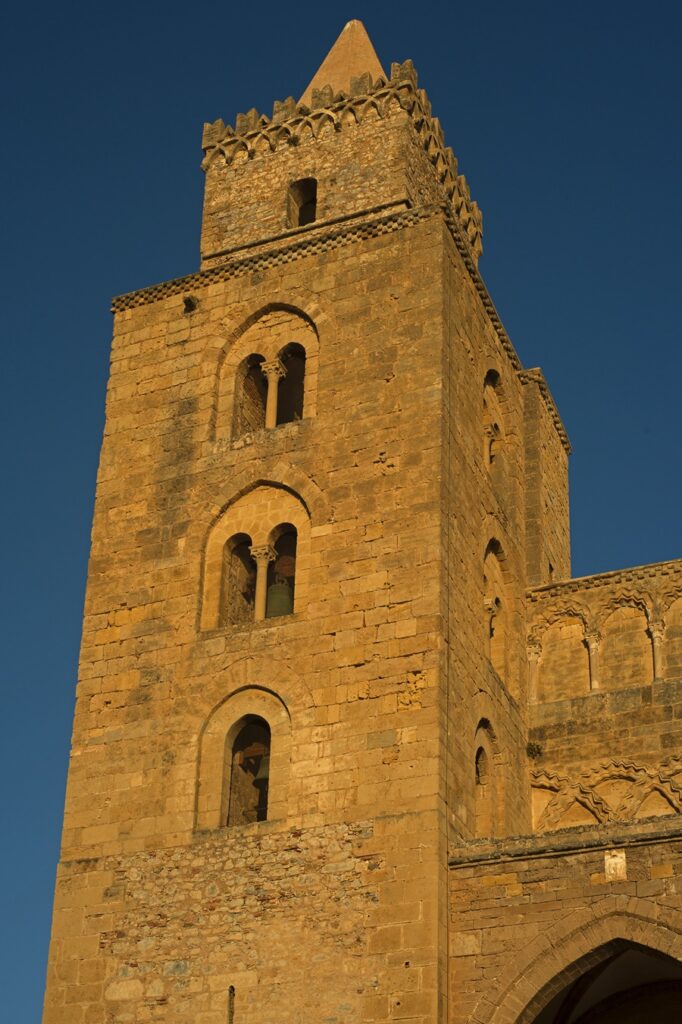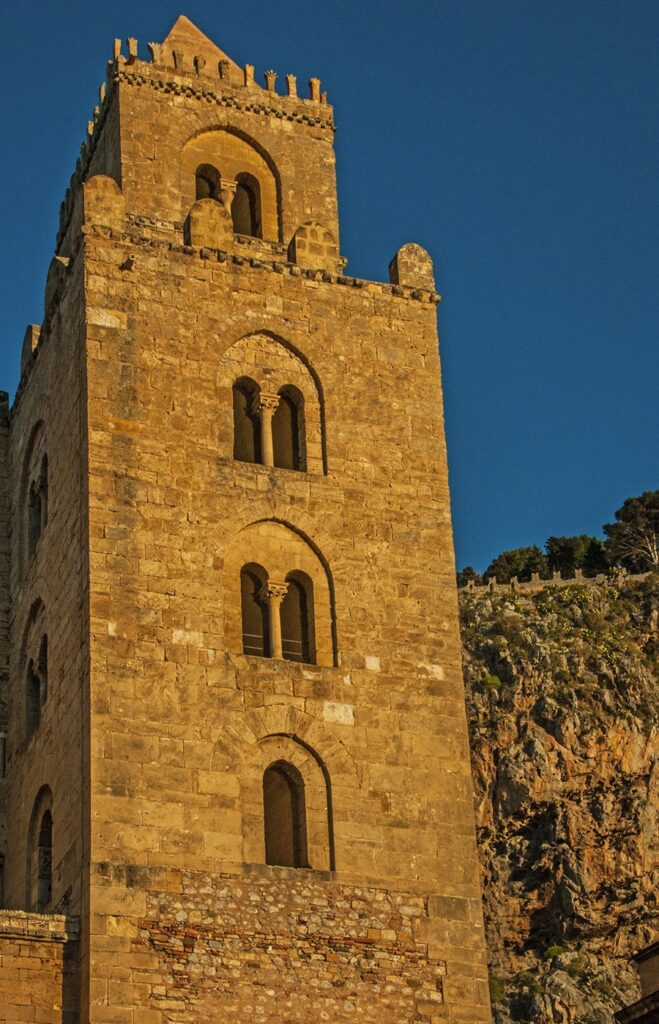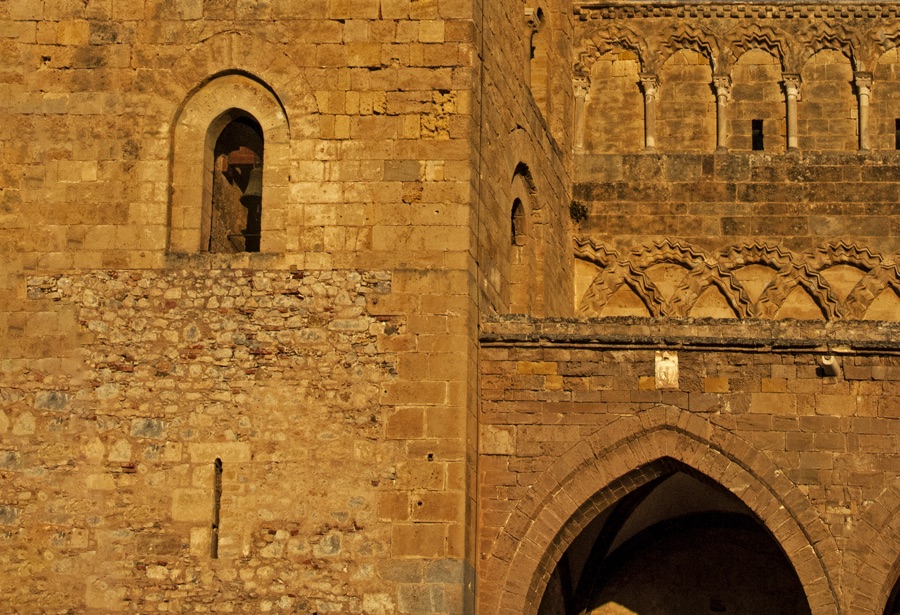Taking a look, from below, at the imposing and compact profile of the cathedral towers, which dominate the landscape of the city, the original defensive function of the area entrusted to them becomes evident. Only apparently symmetrical, they close off the western façade of the centuries-old building, reminiscent of Carolingian
westwerk
, or western building.
The natural slope of the ground on which the towers stand meant that an additional room had to be added to the north tower, which has an octagonal plan. Further differences, made over the centuries, can be seen in the upper part of the mighty structures, starting with the swallow-tailed merlons of the Ghibelline party standing out on the north tower to represent the crown and temporal power. Opposite this, the south tower, distinguished by its square plan, also surrounds the common element of the pyramidal spire with flamed merlons, representing the papal mitre and the spiritual power of the Church.
Further differences, made over the centuries, can be seen in the upper part of the mighty structures, starting with the swallow-tailed merlons of the Ghibelline party standing out on the north tower to represent the crown and temporal power. Opposite this, the south tower, distinguished by its square plan, also surrounds the common element of the pyramidal spire with flamed merlons, representing the papal mitre and the spiritual power of the Church.
The architectural part of the towers is marked by a series of openings of increasing size, starting from the bottom, an area in which the presence of two levels of louvres, or slits, for each tower, characterises the defensive purpose of the
Ecclesia Munita
.
In the middle area, the north tower’s wall facing, divided into five storeys connected by stone stairs, is lightened on four sides by large
single-lancet windows
,
 which have been altered over time, and two further rows of
double-lancet windows
which have been altered over time, and two further rows of
double-lancet windows
.
 Unlike its twin tower, the one that closes the southern wall of the façade does not currently have any overlapping rooms from the same height up to the lantern, apart from the two lower rooms that are poorly lit by the
louvres
Unlike its twin tower, the one that closes the southern wall of the façade does not currently have any overlapping rooms from the same height up to the lantern, apart from the two lower rooms that are poorly lit by the
louvres
. Recent surveys have, however, identified traces of the existence of three more levels that have been lost. The two towers, originally, or at least up to a certain height, must have had the same structure. In an ancient source from Cefalù, the
Rollus Rubens
, the term campanario, meaning bell tower, was mentioned for the first time.